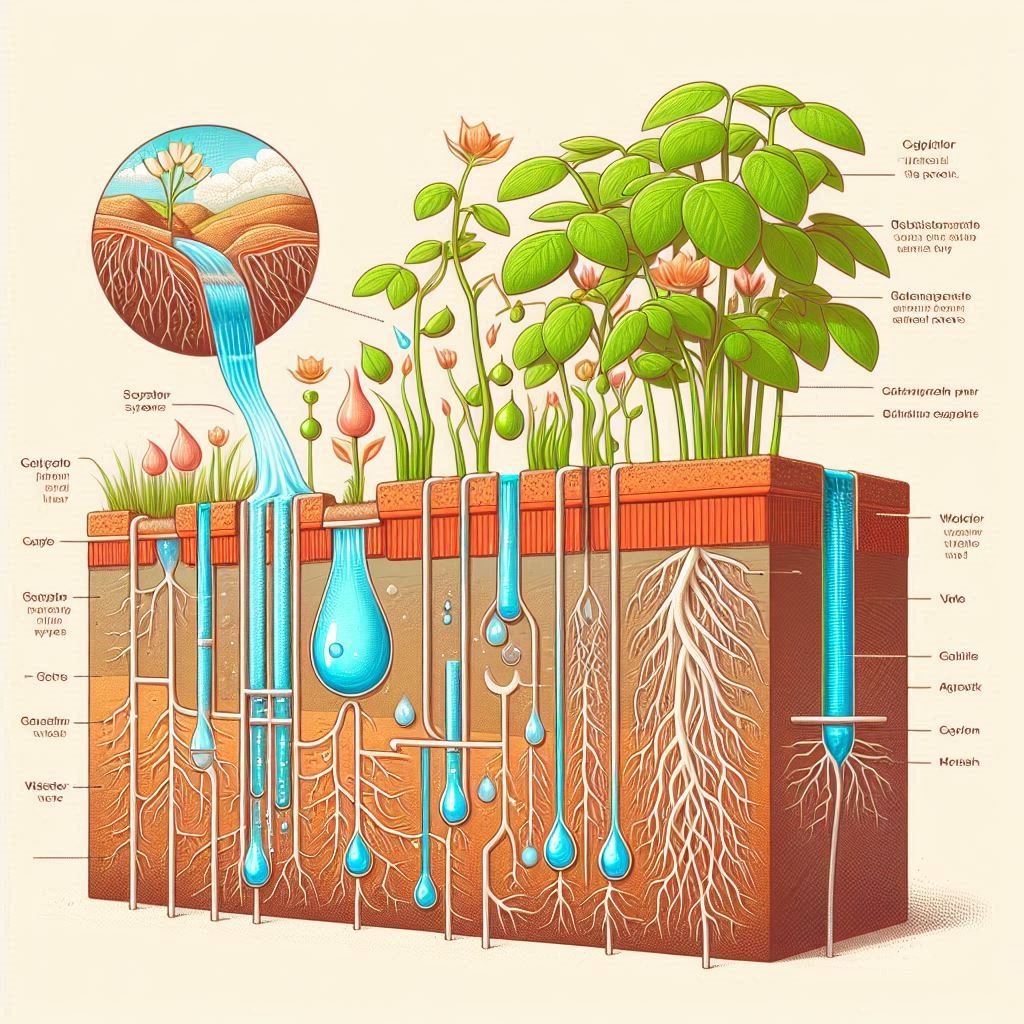Capillary systems are an innovative and efficient irrigation technology that is new to the aquarium hobby and was invented by Aquariengarten. These systems offer a reliable method of supplying plants with constant and even water without the need for manual watering. In this blog post, we explain how capillary systems work, what advantages they offer over conventional irrigation systems and give practical tips on how to use them.
How capillary systems work
Capillary systems are based on the principle of capillarity, which describes the ability of liquids to flow through narrow spaces without external influence. In an aquarium capillary system, this principle is used to transport water from the aquarium to the plants through a wick or an absorbent material (eg fleece).
Functionality:
1. Water absorption : The wick or fleece is immersed in the aquarium water. The material absorbs the water and transports it upwards through capillary action.
2. Distribution : The water is evenly distributed over the coconut tablets or the planting substrate so that the plants are kept continuously moist.
3. Constant humidity level : The plants receive a constant supply of moisture, which creates ideal conditions for growth without the substrate becoming too wet.

Advantages over conventional irrigation systems
Capillary systems offer several advantages compared to traditional irrigation systems:
1. Automatic water supply:
- Capillary systems automatically supply water to the plants without the need for manual watering. This is especially convenient for aquarium owners who are often on the go or have little time for maintenance.
2. Constant humidity:
- The system ensures an even and constant supply of moisture to the plants, minimizing the risk of over- or under-watering. This promotes healthy and stable plant growth.
3. Water efficiency:
- Capillary systems are very water efficient as the water is transported directly to the roots of the plants and evaporation losses are minimized. This contributes to sustainable water consumption.
4. Optimal nutrient supply:
- The constant water supply allows the plants to better absorb the nutrients dissolved in the water, which leads to stronger and healthier growth.
5. Easy to use:
- Capillary systems are easy to install and maintain. They do not require complex technology or regular adjustments, which makes maintenance much easier.
Applications and tips
1. Integration into the aquarium:
- Place the coconut swelling tabs in the CapillaGrow system and make sure that the fleece or wick is well placed in the aquarium water. Within a few minutes, the tabs will absorb the water and remain permanently moist.
2. Optimal placement:
- Make sure that the capillary systems are positioned to transport water evenly to all plants. This can be achieved by correctly placing the fleece or wick.
3. Regular checks:
- Check the water level in the aquarium regularly and add water if necessary to ensure that the capillary system can work continuously.
4. Combined use:
- Use capillary systems in combination with other aquarium plant systems to create an optimal environment for plant growth. For example, capillary systems can be used in larger aquariums to supply plants in hard-to-reach areas.
5. Care of the capillary systems:
- Clean the fleece or wick regularly to avoid clogging with algae or dirt. This will ensure that the system works efficiently and the plants are continuously supplied with water.
Summary
Capillary systems are an excellent solution for the automatic and efficient watering of aquarium plants and represent an innovative innovation in aquarium keeping developed by Aquariengarten. They offer numerous advantages over conventional watering systems, including constant moisture supply, water efficiency and ease of use. By using these systems correctly and maintaining them regularly, aquarium owners can ensure that their plants grow healthy and strong. Try out Aquariengarten's capillary systems and experience the benefits of an innovative watering solution for your aquarium!

